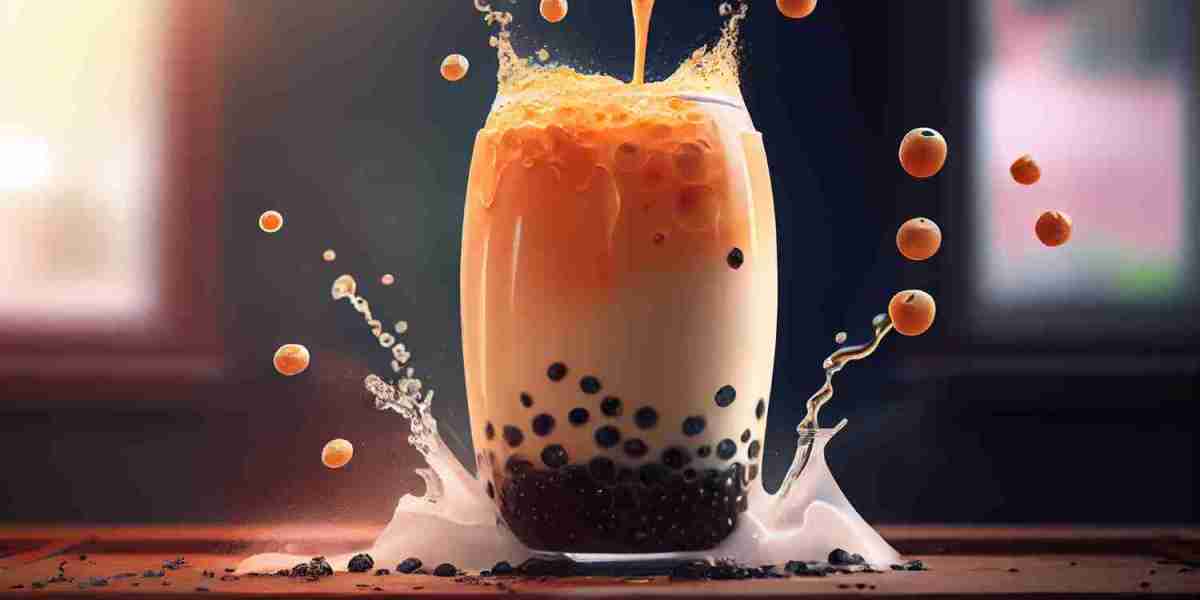1. A Cultural Phenomenon: The Origins of Tapioca Boba Pearls
The origins of tapioca boba pearls date back to 1980s Taiwan, where tea hawkers wanted to come up with a different and fun way of drinking tea. Through the insertion of cooked tapioca balls into sweet milk tea, they unknowingly began a worldwide phenomenon. This simple innovation, which was initially referred to as "bubble tea" from the foamy topping created by shaking the drink, began to be a standard in Asian tea culture.
When globalization caught up, the drink found its way into the Western market. North American, European, and Middle Eastern cafés adopted the trend, usually in their own flavor. But one component remained unchanged—the chewy, dark Tapioca Boba Pearls for Bubble Tea. Their addictive texture and mild taste made them the drink's undeniable headliner.
2. What Are Tapioca Boba Pearls? Understanding the Ingredients
Deep within, tapioca pearls consist of tapioca starch, which is derived from cassava root—a common food source in most tropical countries. The starch is processed into a fine powder and then converted into dough by adding hot water to it. The dough is rolled up into tiny, uniform balls, which are later boiled to create the signature pearls.
Traditionally, pearls are black, resulting from caramel or brown sugar being added during cooking. Variations are numerous, though. Pearls today come in white, green, pink, or even clear, and are frequently flavored with fruit, matcha, or coconut. Whichever the variation, all Tapioca Boba Pearls for Bubble Tea have a distinct chewiness that has captured the taste buds of consumers globally.
3. The Making of a Pearl: How Tapioca Boba Pearls Are Crafted
Creating the perfect tapioca pearl is both an art and a science. First, tapioca starch is mixed with boiling water to form a thick, pliable dough. Once cooled slightly, the dough is kneaded and shaped into small balls, roughly ¼ inch in diameter. This shaping process requires precision to ensure even cooking.
Once the pearls have been formed, they are boiled in hot water for about 30 to 40 minutes. They are stirred regularly to avoid them sticking to one another. They are then usually soaked in a sugar syrup after cooking in order to flavor and keep them soft. This last process not only flavors the pearls but also helps keep them glossy. For optimum enjoyment of bubble tea, Tapioca Boba Pearls for Bubble Tea must be eaten within a few hours of cooking.
4. Nutritional Profile: Are Tapioca Boba Pearls Healthy?
Though certainly delicious, tapioca boba pearls aren't especially nutritious. They are mostly carbohydrates and very low in protein, fat, or fiber. They can be anywhere from 100–200 calories per serving, depending on syrup and cooking method.
Yet tapioca is gluten-free by nature, so Tapioca Boba Pearls for Bubble Tea can be enjoyed by those with gluten intolerance or celiac disease. Other contemporary versions also include more health-conscious ingredients, like chia seeds or konjac, providing healthier alternatives for those who mind. In any case, moderation is the key—enjoyed in moderation, tapioca pearls can add to your drink repertoire a welcome treat.
5. The Sensory Appeal: Why We Love Tapioca Boba Pearls
Some of the appeal of Tapioca Boba Pearls for Bubble Tea is due to texture. Dubbed "QQ" in Taiwanese colloquialism, it refers to a chewy texture much sought after. It gives a gratifying counterpoint to the smoothness of the tea, producing an interesting sensory experience with each drink.
Additionally, the visual appearance of bubble tea plays an important role in its appeal. The contrast of vibrant liquids against black pearls is aesthetically pleasing. Most consumers are attracted to the drink not just for its taste but for its photogenic appearance. Essentially, tapioca boba pearls make drinking a participatory, multisensory experience.
6. Innovation and Customization: Modern Takes on Tapioca Boba Pearls
With how bubble tea has developed, so too have the pearls. Nowadays, there is constantly increasing variety of boba to suit different tastes and dietary requirements. For example, some cafes provide pearls containing fruit juice (popping boba), whereas others provide mini pearls, which provide a new chewing experience.
Moreover, flavor-infused and color-enriched pearls—like matcha green, strawberry pink, and even charcoal black—have gained vast popularity. These developments enable consumers to further customize their beverages. No matter what shape they come in, Tapioca Boba Pearls for Bubble Tea are still at the core of bubble tea culture, continuing to evolve and inspire.
7. Making Bubble Tea at Home: A DIY Guide to Tapioca Boba Pearl
With the increase in home-based food preparation and do-it-yourself kits, it is now possible to prepare bubble tea at home as a fulfilling activity for fans. Although it does appear challenging initially, making Tapioca Boba Pearls for Bubble Tea becomes easy with proper ingredients and guidelines.
First, buy good-quality tapioca pearls or tapioca starch from an Asian market or online retailer. Use a reliable recipe to make the dough and roll out the pearls. Boil them until they have the desired texture and soak them in brown sugar syrup. Serve them with brewed black tea, milk (or milk substitute), and your preferred sweetener. The result is your own custom bubble tea beverage—fresh, tasty, and lovingly prepared.
8. Sustainability and Future Trends: What's Next for Boba Pearls
With the rise in popularity of bubble tea, the business is also bracing itself for new challenges and prospects—namely, sustainability. Plastic straws, containers, and packaging materials have found themselves in the eye of the storm, moving toward greener solutions. Biodegradable straws, refusable tumblers, and locally sourced materials are taking over in most bubble tea outlets.
Innovators are also researching how to make Tapioca Boba Pearls for Bubble Tea with greener starch sources or organic practices. The future of boba is not just about tasty flavors but sustainable practices that benefit both the consumer and planet. As the boba industry continues to mature, it will probably be environmentally friendly decisions that will define the next phase of this worldwide trend.
More Than Pearls in a Cup
Overall,Tapioca Boba Pearls for Bubble Tea are more than just an ingredient URL—they're a convergence of culture, craftsmanship, and creativity. From their small-scale origins in Taiwanese night markets to their global popularity today, these pearls continue to inspire and enthrall.
As a content writer with more than five years of experience, I am positive that no drink has enthralled a generation as bubble tea. The pearls are not an afterthought; they are the essence of the beverage. Whether consumed at a busy café or prepared at home with love, tapioca boba pearls will continue to be an evergreen and delicious icon of gastronomic creativity.



